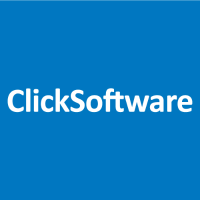Top Customer Experience Management Softwares
Customer Experience Management software is pivotal in helping businesses enhance their interactions with customers. This category of tools assists organizations in gathering, analyzing, and leveraging customer feedback to improve service and satisfaction. By providing insights into customer preferences and behaviors, these platforms empower businesses to tailor strategies that meet customer needs ... Read More
164 companies found
Product Description
Everis is all about making your business run smoother with software that's easy to use. Imagine software that helps you with everyday tasks, keeps everything organized, and frees up time to focus on what really matters. That’s what Everis aims to bring to your company. What sets Everis apart is its attention to what businesses actually need. Whether you're just starting out or already have a larg... Read More
Users
- • No Data
Industries
- • No Data
Market Segment
- • No Data
Press Ganey
Product Description
Press Ganey is a software provider that helps businesses improve their operations by focusing on the experiences of their customers and employees. Their platform specializes in collecting and analyzing feedback, offering insights that can guide better decision-making and improve overall satisfaction. With Press Ganey, companies can easily gather feedback through surveys and other means, whether ... Read More
Users
- • No Data
Industries
- • No Data
Market Segment
- • No Data
ClickSoftware
Product Description
ClickSoftware is a company specializing in field service management solutions designed to make the workday smoother and more efficient for businesses. Their software helps companies manage their mobile workforce by optimizing scheduling, improving customer service, and making sure that technicians have everything they need to complete their tasks successfully. The main aim of ClickSoftware is to... Read More
Users
- • No Data
Industries
- • No Data
Market Segment
- • No Data
Product Description
SugarCRM is a customer relationship management software designed to help businesses manage and improve their interactions with customers and prospects. It's intended for companies that want to streamline their sales, marketing, and customer service processes in one platform. With SugarCRM, you get a variety of tools that simplify how your business handles customer data. The software brings all yo... Read More
Users
- • No Data
Industries
- • No Data
Market Segment
- • No Data
Trustpilot
Product Description
Trustpilot is a popular platform designed to help businesses collect and showcase customer reviews. It's geared towards companies of all sizes, making it easier for them to build and maintain trust with their customers. By providing a place where consumers can share their experiences, Trustpilot helps businesses understand customer needs and preferences better. Businesses using Trustpilot can int... Read More
Users
- • No Data
Industries
- • No Data
Market Segment
- • No Data
Product Description
Medallia offers a specialized software solution designed to help companies understand and improve their customer and employee experiences. Using this platform, businesses can gather feedback from various touchpoints and translate it into meaningful insights. Medallia’s software captures feedback in real time across multiple channels such as web, mobile, social media, and in-person interactions. ... Read More
Users
- • No Data
Industries
- • No Data
Market Segment
- • No Data
Product Description
FullStory is a software tool designed specifically for businesses that want to understand customer interactions on their digital platforms. At its core, FullStory provides insights into how users navigate websites and mobile apps, giving companies a clear view of the customer experience. Think of it as a digital recording studio for your website, capturing every click, scroll, and tap. By using F... Read More
Users
- • No Data
Industries
- • No Data
Market Segment
- ��• No Data
ContentSquare
Product Description
ContentSquare is a user experience analytics platform designed to help businesses understand how users interact with their websites and applications. By providing detailed insights into user behavior, ContentSquare allows companies to improve their digital experiences and boost conversion rates. The software records every click, scroll, and interaction on your digital platforms, giving you a clea... Read More
Users
- • No Data
Industries
- • No Data
Market Segment
- • No Data
Product Description
Yotpo is a platform designed to help eCommerce businesses enhance their customer experience by leveraging user-generated content. It enables companies to collect and showcase reviews, ratings, photos, and Q&A, which can boost credibility and drive more sales. By integrating seamlessly with various eCommerce platforms, Yotpo makes it simple for brands to gather authentic feedback from customers and... Read More
Users
- • No Data
Industries
- • No Data
Market Segment
- • No Data
Product Description
Pendo.io is a user experience platform designed to help software companies better understand, engage, and support their customers. Built with SaaS needs in mind, Pendo integrates seamlessly into your applications, giving you the tools to gather valuable insights into how your users interact with your product. By analyzing this data, you can easily identify user behaviors, preferences, and pain poi... Read More
Users
- • No Data
Industries
- • No Data
Market Segment
- • No Data
What is Customer Experience Management software?
Customer Experience Management software is a set of technological solutions designed for businesses to understand, analyze, and improve their customer interactions. The primary goal of such software is to optimize the experience customers have with a business across all touchpoints, including online and offline interactions.
Understanding Customer Experience Management
Customer Experience Management (CEM) focuses on aligning a company's processes around a single mandate: delivering great customer experiences. This involves understanding customer journeys, their needs, and expectations. Customer Experience Management software provides tools to manage these tasks efficiently, ensuring that businesses can respond proactively to customer feedback and preferences.
Components of Customer Experience Management Software
Customer Experience Management software typically includes several components that work in harmony to offer a seamless customer experience:
-
Customer Feedback: This involves gathering feedback from multiple channels such as surveys, social media, and direct contact. Effective software helps capture and analyze this data to provide actionable insights.
-
Data Analytics: Data gathered from customer interactions is analyzed to identify trends and insights. This helps businesses to make informed decisions that enhance customer satisfaction.
-
Journey Mapping: The customer's interaction journey is mapped out to understand their needs at each touchpoint. Customer Experience Management software aids in visualizing this journey, allowing businesses to identify and address pain points.
-
Personalization: Based on gathered data and analytics, businesses tailor their offerings to meet individual customer preferences. This level of personalization helps in building stronger customer relationships.
Benefits of Customer Experience Management Software
The implementation of Customer Experience Management software can lead to several benefits:
-
Enhanced Customer Loyalty: By understanding and meeting customer needs more effectively, businesses can foster genuine loyalty, leading to long-term engagement.
-
Increased Revenue: Satisfied customers are more likely to make repeat purchases and recommend the brand to others, driving higher sales and revenue.
-
Improved Customer Insights: Businesses gain a deeper understanding of what their customers want, allowing them to innovate and improve continually.
-
Operational Efficiency: Streamlining the experience management process reduces inefficiencies and costs, providing a structured approach to customer interaction.
Importance in Today's Market
In today's competitive market, businesses need to provide more than just a product or service; they must deliver a top-notch customer experience to retain their client base. Customer Experience Management software plays a crucial role in this, helping businesses to differentiate themselves through superior customer service and experience. With the increasing number of customer interaction channels, from social media to mobile apps, Customer Experience Management software is becoming indispensable. It ensures that businesses can maintain a consistent and positive experience across all platforms.
Customer Experience Management software is key in crafting personalized and effective communication strategies, ensuring that businesses remain relevant and responsive to evolving customer needs. This software is not just about managing interactions; it's about turning those interactions into insightful data that drive strategic business decisions.
How does Customer Experience Management software improve customer satisfaction?
Customer Experience Management software plays a pivotal role in enhancing customer satisfaction by streamlining and optimizing interactions across various touchpoints. This software enables companies to understand and anticipate customer needs, leading to improved service and stronger connections. Here’s how Customer Experience Management software contributes to increased customer satisfaction:
Understanding Customer Needs
Customer Experience Management software collects and analyzes data from multiple channels such as social media, email, and direct feedback. This enables businesses to gain valuable insights into customer preferences, behaviors, and expectations. By leveraging this information, organizations can tailor their offerings to better meet the needs and desires of their customers, thereby elevating their overall experience.
Personalization
With insights garnered from data analysis, Customer Experience Management software allows for the creation of personalized experiences. Personalized interactions make customers feel valued and understood, fostering a sense of loyalty and satisfaction. Through tailored recommendations, targeted marketing campaigns, and personalized communication, businesses can significantly enhance the individual's journey with the brand.
Consistent Multi-Channel Engagement
Customers interact with brands across various platforms, expecting a seamless experience. Customer Experience Management software ensures consistency in communication and service, regardless of the channel. By integrating data and customer interactions across platforms, the software helps manage and present a unified experience. Consistency enhances customer trust and satisfaction as it reduces frustration and confusion often associated with fragmented service.
Proactive Customer Service
By continuously monitoring customer interactions and feedback, Customer Experience Management software allows businesses to anticipate issues before they escalate. Proactive customer service involves addressing potential problems or inquiries promptly, which helps mitigate dissatisfaction and reinforce positive experiences. Quick resolution of issues reduces negative feedback and fosters a perception of reliability and commitment among customers.
Feedback Management
Gathering and analyzing feedback is crucial for improving service and customer satisfaction. Customer Experience Management software facilitates efficient feedback collection and analysis, helping identify trends and areas for improvement. By acting on feedback, businesses show customers that their opinions matter, leading to increased engagement and a stronger relationship. Listening to customer voices enhances satisfaction, as clients feel more connected and valued.
Enhancing Quality of Products and Services
Customer Experience Management software provides insights into customer perceptions of products and services, driving improvements. By analyzing feedback and engagement data, businesses can identify shortcomings and areas requiring enhancements. Addressing these promptly leads to higher quality offerings, satisfying customer needs and expectations more effectively.
Building Long-term Relationships
Developing long-term customer relationships is essential for sustained satisfaction. By delivering exceptional experiences consistently, Customer Experience Management software strengthens trust and loyalty. A satisfied customer is more likely to become a repeat purchaser or advocate for the brand, spreading positive word-of-mouth. Long-term relationships fostered through positive experiences contribute significantly to overall customer satisfaction.
Overall, Customer Experience Management software empowers organizations to deliver exceptional experiences tailored to individual customer needs, ensuring satisfaction at every touchpoint. Through data-driven insights and proactive management, businesses can cultivate a customer-centric approach that enhances satisfaction and supports enduring loyalty.
What are the key features of Customer Experience Management software?
Customer Experience Management software is designed to enhance and streamline interactions between businesses and their customers. This software encompasses a range of features aimed at improving the overall customer experience by gathering feedback, analyzing data, and facilitating communication. Its function is to help companies deliver personalized and efficient service. Below are the key features commonly found in Customer Experience Management software:
Feedback Collection Tools
Customer Experience Management software often includes robust tools for collecting customer feedback. This can include surveys, forms, and direct feedback portals. These tools allow businesses to gather insights directly from their clientele, often in real-time. The feedback gathered serves as a foundational element for understanding customer satisfaction and identifying areas for improvement.
Data Analytics and Reporting
A critical feature of Customer Experience Management software is its analytics capabilities. The software collects data from various touchpoints and enables businesses to analyze this information to uncover trends and patterns. Advanced analytics tools can segment data into digestible formats, providing reports and visualizations that help businesses understand customer behaviors and preferences.
Customer Journey Mapping
Customer Experience Management software includes the ability to map the customer journey, allowing businesses to track and analyze each interaction a customer has with their brand. This feature helps identify touchpoints that need optimization and recognizes stages where customers are most engaged or encounter issues. By visualizing the customer journey, businesses can enhance their strategies to better serve their customers.
Omnichannel Support
To provide a seamless customer experience, omnichannel support is a vital feature. Customer Experience Management software integrates various communication channels such as email, social media, phone, and chat. This feature ensures that customers receive consistent service across all platforms, and businesses can manage interactions through a singular, streamlined interface.
Personalization Engines
Many Customer Experience Management software solutions offer personalization engines. These tools tailor the customer experience based on individual behaviors and preferences. By utilizing data analytics, the software can predict customer needs and suggest personalized actions, content, or offers, enhancing engagement and satisfaction.
Integration Capabilities
Software integration is a key feature, allowing Customer Experience Management tools to connect with CRM systems, marketing platforms, and ERP solutions. This integration ensures that customer data is centralized and accessible, providing a comprehensive view of each customer which enhances decision-making and collaboration across departments.
Real-Time Alerts and Notifications
Real-time alerts and notifications are essential for businesses that aim to respond promptly to customer inquiries or issues. Customer Experience Management software provides instant alerts regarding customer feedback or service disruptions, allowing businesses to act quickly to maintain a positive customer experience.
Sentiment Analysis
Many Customer Experience Management software solutions include sentiment analysis, which evaluates customer feedback to determine the overall tone and emotion behind interactions. Understanding customer sentiment helps businesses identify customer emotions such as satisfaction or frustration and address these sentiments proactively.
These features collectively form the bedrock of Customer Experience Management software, providing the tools needed for businesses to understand, enhance, and maintain positive customer relationships.
Why is Customer Experience Management software important for businesses?
Enhances Customer Satisfaction
Customer Experience Management software is fundamental for bolstering customer satisfaction. It enables businesses to gather, analyze, and manage customer interactions across multiple channels. This holistic view allows companies to understand customers' needs, preferences, and pain points. By tailoring services and products accordingly, businesses can significantly enhance customer satisfaction levels, fostering loyalty and repeat business.
Fosters Brand Loyalty
Building brand loyalty is essential in today's competitive market. By utilizing Customer Experience Management software, businesses can personalize customer interactions, making each customer feel valued and understood. Personalization can range from targeted communication to personalized product recommendations. This level of engagement nurtures stronger customer relationships, encouraging repeat purchases and cultivating brand advocates.
Drives Revenue Growth
Increased customer satisfaction and loyalty directly impact a company's bottom line. Satisfied customers are more likely to recommend products or services, leading to new business opportunities. Customer Experience Management software aids in identifying high-value customers and tailoring marketing strategies to maximize revenue from these segments. By improving customer retention rates and enhancing acquisition strategies, businesses can drive substantial revenue growth.
Streamlines Operations
Efficiently managing customer interactions is crucial for operational success. Customer Experience Management software allows businesses to automate and streamline various processes, from customer support to feedback collection. This automation reduces manual efforts, minimizes errors, and enhances response times. Consequently, businesses can allocate resources more effectively, improving overall operational efficiency and reducing costs.
Provides Actionable Insights
Understanding customer behavior is vital for making informed business decisions. Customer Experience Management software provides detailed insights and analytics on customer interactions, preferences, and trends. Businesses can leverage these insights to optimize their strategies, identify potential areas for improvement, and anticipate future trends. Actionable insights allow companies to stay ahead of the curve and remain competitive in their respective industries.
Supports Omnichannel Experience
In a digitally connected world, customers interact with businesses through multiple channels. Ensuring a seamless experience across all platforms is crucial for maintaining strong customer relationships. Customer Experience Management software enables businesses to manage and orchestrate customer interactions across various channels, ensuring consistency in messaging and experience. An effective omnichannel approach not only enhances customer satisfaction but also strengthens brand image.
Reduces Churn
Customer churn is a significant challenge for many businesses. High churn rates can impede growth and diminish profitability. By employing Customer Experience Management software, businesses can identify the reasons behind customer attrition and implement strategies to mitigate them. Through proactive engagement and addressing customer concerns promptly, businesses can reduce churn rates and retain a larger customer base.
Enhances Competitive Edge
In competitive markets, delivering exceptional customer experiences can be a differentiator. Customer Experience Management software empowers businesses to go beyond traditional service models and create unique, memorable customer experiences. By focusing on customer-centric strategies, businesses can distinguish themselves from competitors. A competitive edge in customer experience translates to a stronger market position and increased customer loyalty.
In conclusion, Customer Experience Management software plays a crucial role in various aspects of business operations, from enhancing customer satisfaction to providing actionable insights. Businesses that effectively implement these solutions are better positioned to achieve long-term success and growth.
How does Customer Experience Management software collect customer feedback?
Customer Experience Management (CEM) software is essential for understanding and improving the interactions between a business and its customers. One of the key functions of Customer Experience Management software is to effectively gather customer feedback. Here’s how it typically achieves this:
1. Surveys
-
Email Surveys: Customer Experience Management software often uses email to send surveys to customers after an interaction or purchase. This method allows businesses to gather detailed feedback directly linked to a specific experience.
-
In-App Surveys: For software-based products or services, in-app surveys provide a seamless way to gather immediate feedback within the product interface. This allows capturing user sentiments right when the experience is fresh.
-
Website Pop-ups: Pop-up surveys on websites are another means used by CEM software to encourage quick feedback from users on their web experience.
2. Social Listening Tools
Customer Experience Management software integrates social listening tools that track and monitor brand mentions and customer sentiments on social media platforms. This helps in understanding public perceptions, addressing complaints, and leveraging positive feedback.
3. Feedback Forms
Many CEM solutions offer customizable feedback forms that can be embedded on websites, applications, or even at physical points-of-sale. These forms can capture structured and unstructured data, allowing customers to express their opinions freely.
4. Net Promoter Score (NPS) Surveys
Customer Experience Management software frequently employs NPS surveys to measure customer loyalty by asking how likely they are to recommend a product or service. This single-question survey is instrumental in gauging customer satisfaction and loyalty.
5. Live Chat Transcripts
Live chat services integrated into CEM software can provide valuable insights. The transcripts of these interactions are analyzed to extract meaningful feedback and identify common customer queries or issues.
6. Voice of Customer (VoC) Programs
VoC programs, facilitated by CEM software, systematically collect customer feedback through multiple channels, including forums, communities, or direct communication. This ensures a comprehensive understanding of customer needs and expectations.
7. Customer Interviews
Some Customer Experience Management software includes features for scheduling and conducting customer interviews, either virtually or in-person. These interviews allow for in-depth feedback collection straight from the source.
8. Mobile Feedback Collection
With the rise of mobile technology, CEM software often supports mobile feedback collection through smartphone apps. Mobile surveys and feedback forms can be sent via SMS or push notifications to gather insights from users on-the-go.
9. Review Platforms Integration
Integration with online review platforms enables CEM software to pull in customer feedback and reviews automatically, providing a broader perspective on customer satisfaction and areas of improvement.
Customer Experience Management software tool is a robust means to collect and analyze customer feedback through various channels, ensuring that businesses can adapt and refine their strategies to enhance overall customer satisfaction.
What are the benefits of using Customer Experience Management software?
Enhanced Customer Insight
Customer Experience Management software provides businesses with profound insights into customer behavior, preferences, and feedback. By analyzing data collected through various touchpoints, companies can understand their customers' journeys and segment them based on distinct characteristics or behaviors. This understanding enables more personalized marketing strategies and can significantly improve the overall customer experience.
Improved Engagement
With Customer Experience Management software, businesses can foster better engagement with their customers. These tools give companies the capability to deliver personalized communications and offers based on customer preferences and previous interactions. Enhanced engagement not only strengthens the bond between the brand and customers but also encourages brand loyalty.
Consistent Multi-Channel Experience
In today’s market, customers interact with brands across various channels—whether it’s through social media, mobile apps, websites, or in-store experiences. Customer Experience Management software ensures a seamless integration across these channels, providing a unified and consistent customer experience. Companies can ensure that their messaging and branding are consistent, regardless of how or where the customer interacts with them.
Increased Customer Retention
Businesses can boost customer retention rates by utilizing Customer Experience Management software to establish a more gratifying customer journey. By leveraging the insights gained from these tools, companies can identify pain points in the customer journey and make the necessary adjustments. This capability helps in not only meeting customer expectations but exceeding them, which increases the likelihood of retaining customers over the long term.
Data-Driven Decision Making
Customer Experience Management software powers data-driven decision-making by offering businesses comprehensive analytics and reporting features. By gathering data from various points and transforming it into meaningful insights, companies can make well-informed decisions that enhance customer satisfaction and drive growth. This data-driven approach ensures that strategic planning aligns closely with actual customer needs and trends.
Increased Revenue
When effectively implemented, Customer Experience Management software can lead to increased revenue. By understanding and aligning with customer needs, businesses are more likely to enhance their sales opportunities through cross-selling and upselling. A positive customer experience often results in recommendations and referrals, aiding in the acquisition of new customers.
Brand Loyalty and Advocacy
Happy customers are more likely to become brand advocates. Customer Experience Management software aids in creating exceptional customer experiences that turn customers into advocates for your brand. Satisfied customers share their positive experiences with peers, expanding the brand’s reach through word-of-mouth marketing.
Operational Efficiency
Automating customer interactions and feedback collection through Customer Experience Management software enables businesses to improve their operational efficiency. Streamlined processes facilitate quicker response times and more effective handling of customer inquiries or issues. By automating these tasks, teams can focus on more strategic initiatives that contribute to business growth.
Personalized Customer Experience
With the help of Customer Experience Management software, companies can provide a personalized customer journey. Tailoring messages, offers, and interactions based on individual customer data helps create a more personalized experience. This personalization leads to higher customer satisfaction levels, fostering stronger relationships between the company and its customers.
How does Customer Experience Management software help in personalizing customer interactions?
Customer Experience Management software plays a pivotal role in personalizing customer interactions by leveraging data-driven personalized strategies. Such software is designed to improve the overall experience by tailoring interactions to fit individual preferences and behaviors. There are several key ways in which this category of software enhances personalization:
Collecting and Analyzing Customer Data
One of the primary functions of Customer Experience Management software is to gather comprehensive customer data from various touchpoints. This data includes purchase history, browsing behavior, and demographic information. Analyzing this data enables businesses to understand customer preferences and predict future needs, which forms the foundation for personalization.
Segmentation
Customer Experience Management software utilizes advanced algorithms to segment customers into distinct categories based on their behaviors, needs, and interactions. By segmenting customers, businesses can create targeted messaging and offers tailored to specific customer groups, enhancing the relevance of each interaction.
Real-time Personalization
With the help of Customer Experience Management software, businesses can provide real-time personalization. This means that as customers interact with a brand, the software can instantly adapt content, recommendations, and communication based on the latest customer data. This ensures that each customer receives a unique and relevant experience.
Enhancing Communication Channels
Personalized communication is integral to a successful customer experience strategy. Customer Experience Management software supports multi-channel communication, allowing businesses to personalize interactions across different platforms such as email, chat, social media, and more. By tailoring the language and timing of messages, businesses can engage customers more effectively.
Customizing User Interfaces
Customer Experience Management software often includes features that allow for the customization of user interfaces. By presenting products and services that align with customer interests directly on their dashboard or homepage, businesses can create a seamless and intuitive experience that feels uniquely tailored to each user.
Feedback Loops
To continuously refine personalization strategies, Customer Experience Management software facilitates the collection of customer feedback through surveys and reviews. This feedback is analyzed to gain insights into customer satisfaction and expectations, enabling businesses to make data-driven adjustments to their personalization efforts.
Predictive Analytics
Leveraging predictive analytics, Customer Experience Management software can anticipate customer needs and preferences. By applying machine learning algorithms to historical data, the software predicts future purchasing behaviors and interests. These insights allow businesses to proactively offer products and services, creating a personalized anticipatory experience.
Building Customer Profiles
Customer Experience Management software helps in building comprehensive customer profiles that compile individual preferences, interactions, and feedback over time. These profiles serve as a detailed resource that businesses can use to deliver consistently personalized interactions throughout the customer journey.
Through these methods, Customer Experience Management software empowers businesses to forge stronger, more meaningful relationships with their customers. By offering a tailored experience, businesses can not only meet but exceed customer expectations, fostering loyalty and long-term engagement.









